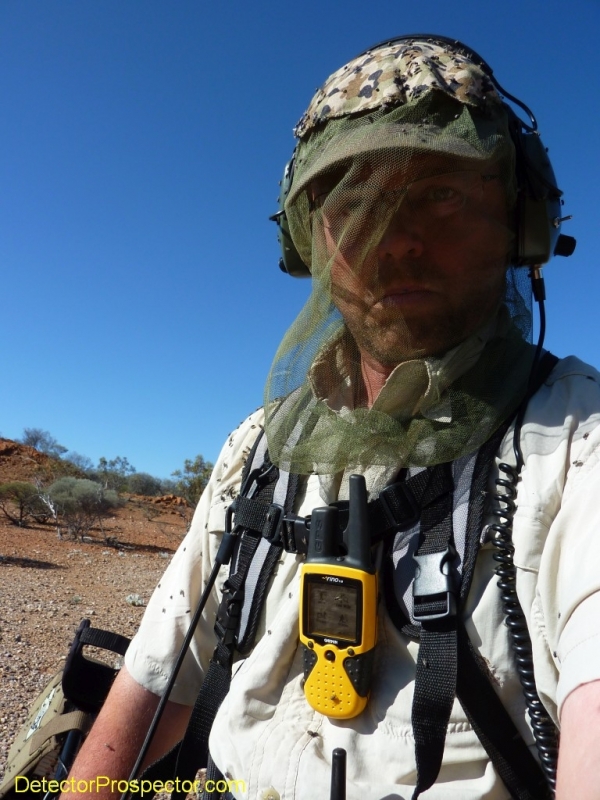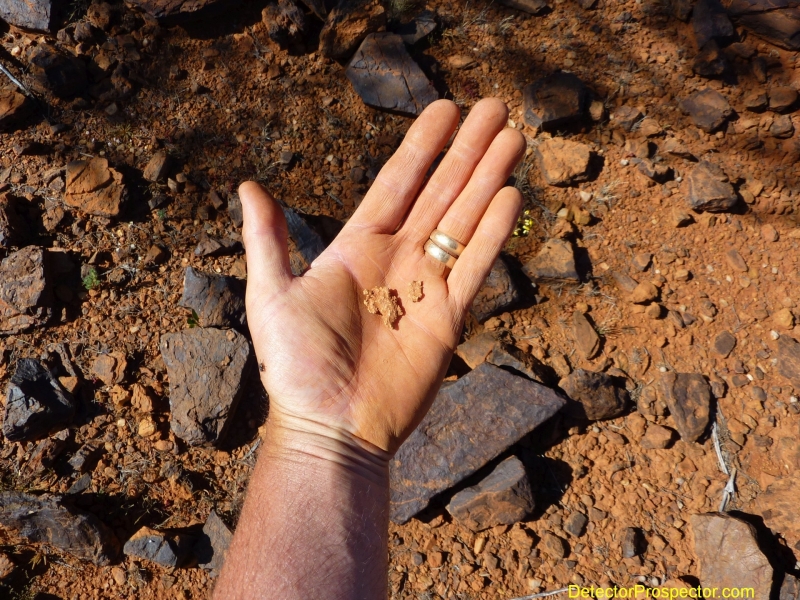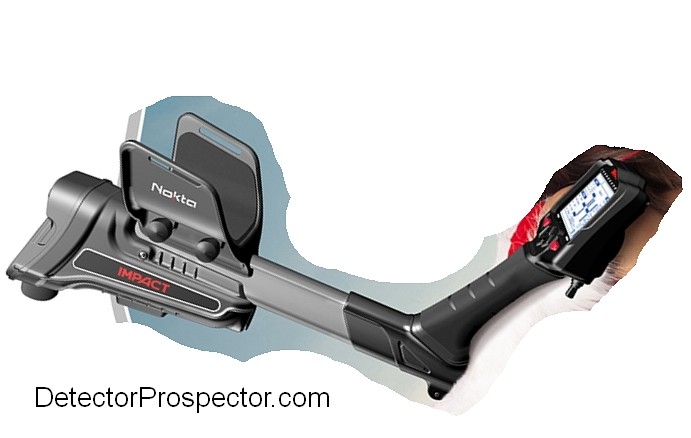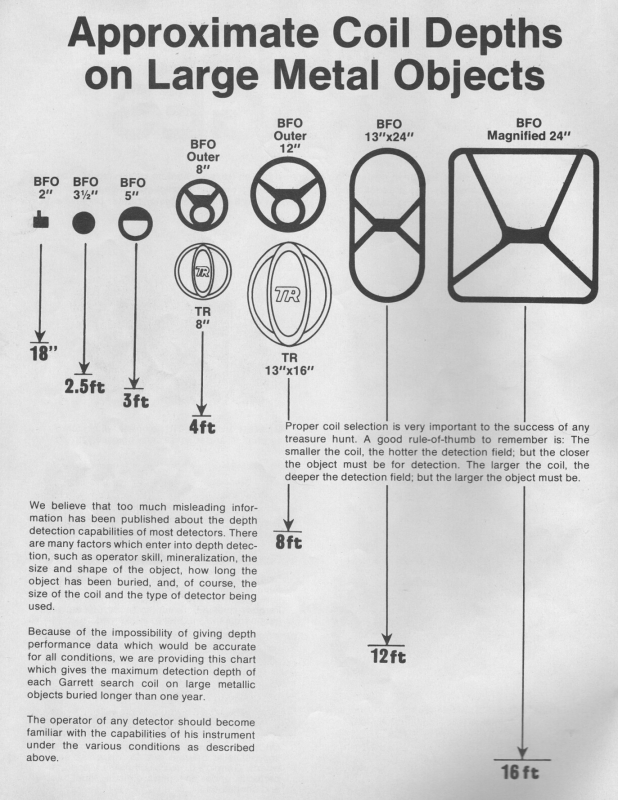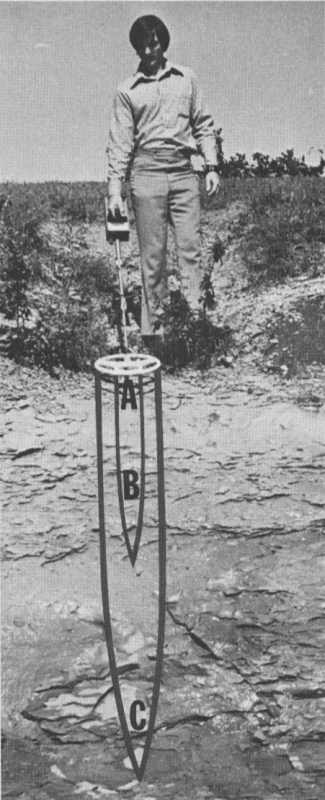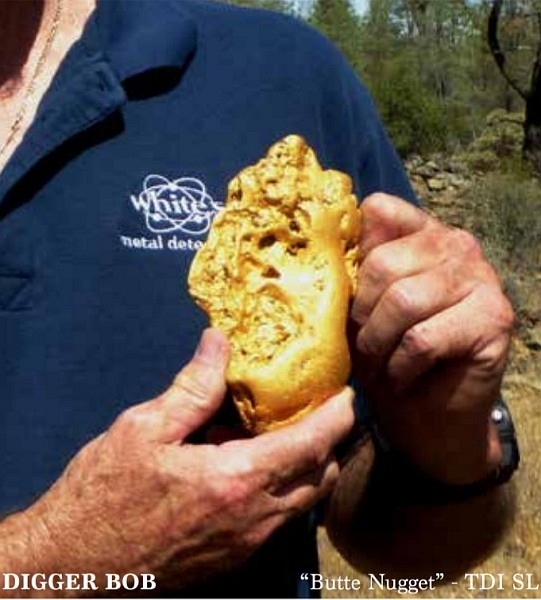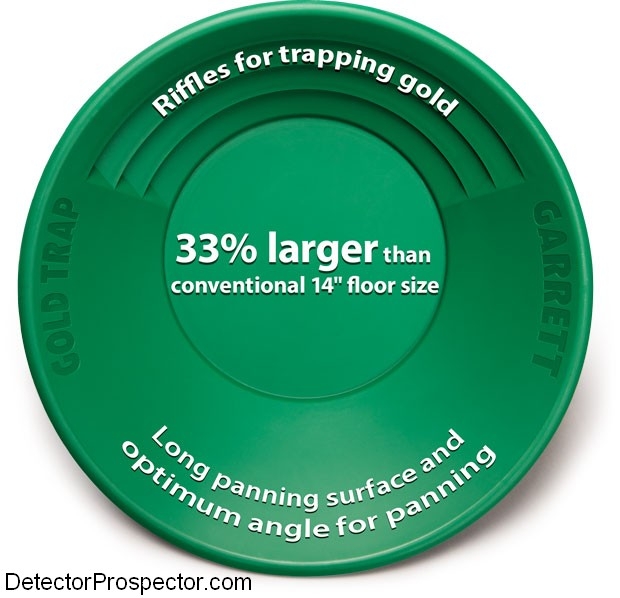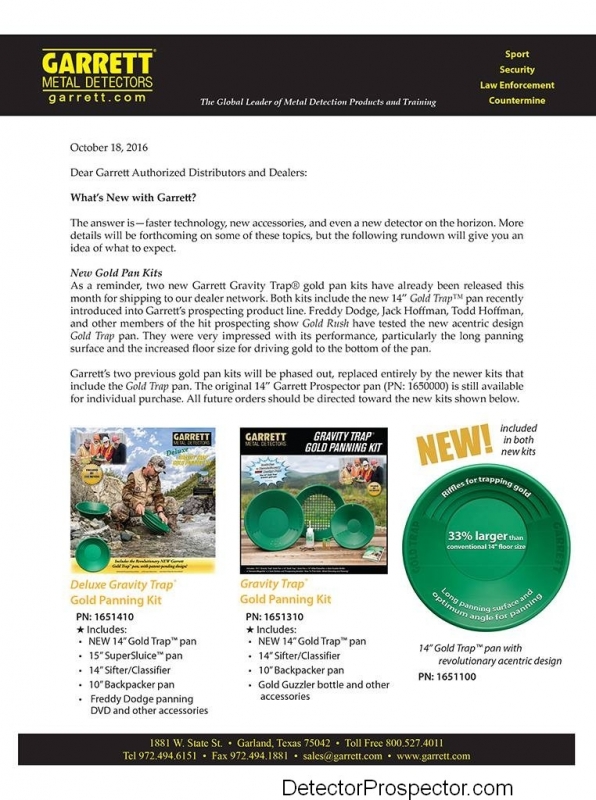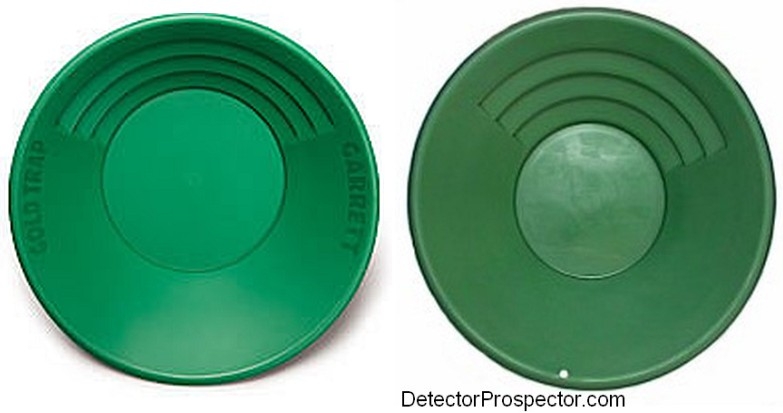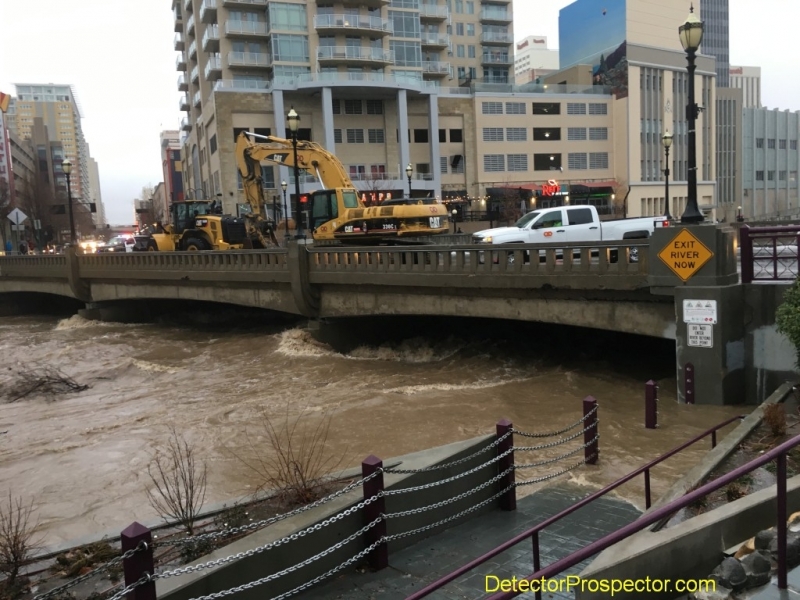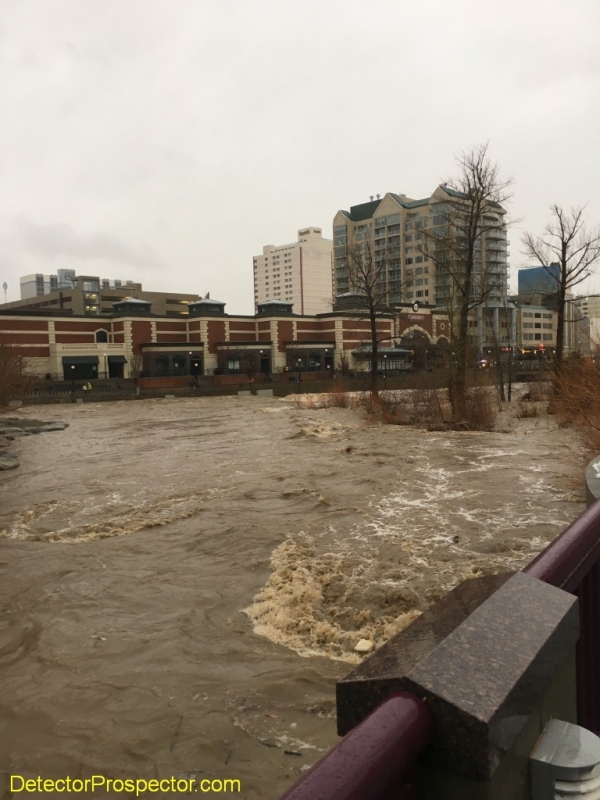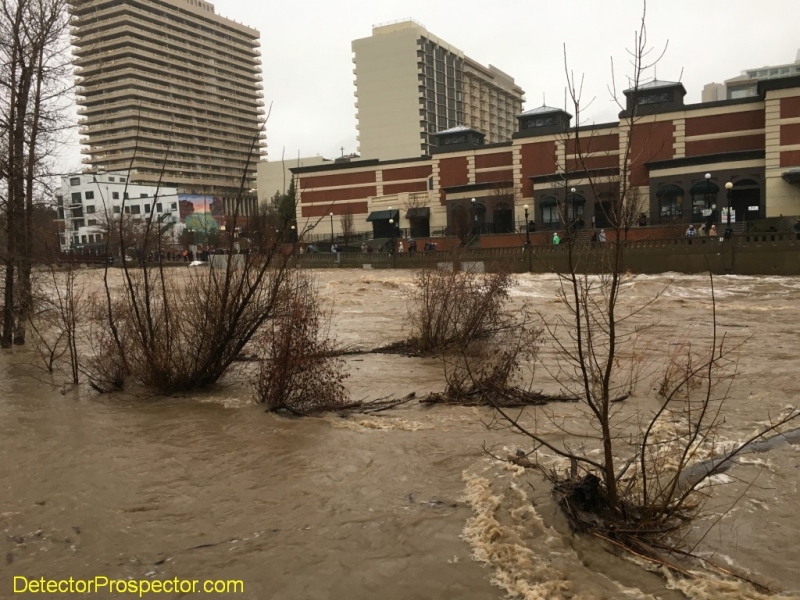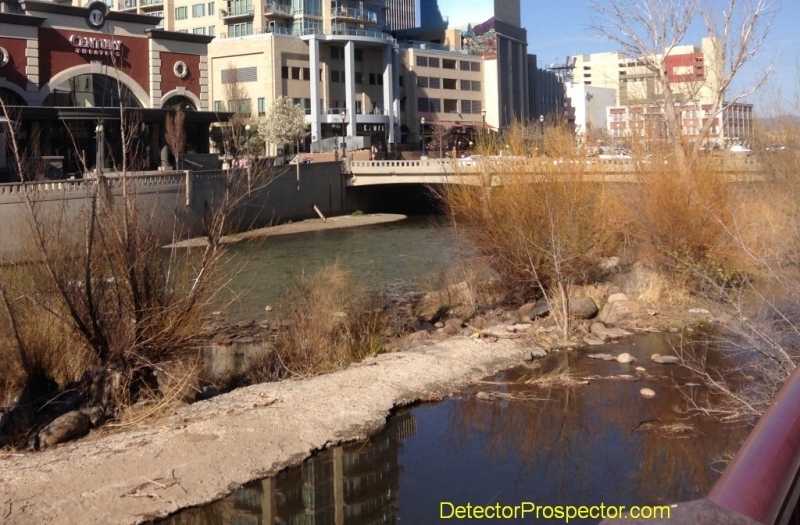-
Posts
19,794 -
Joined
Content Type
Forums
Detector Prospector Home
Detector Database
Downloads
Everything posted by Steve Herschbach
-

Steve's 2011 Australia Gold Adventure
Steve Herschbach replied to Steve Herschbach's topic in Detector Prospector Forum
The early days of our trip we did not see many flies but now they were coming on strong, as can be seen in the photo above with the Spiny Anteater. The flies were not biting flies and so not a worry in that regard, but they are looking for moisture of any sort and are attracted to a persons face. Absolutely maddening and bad enough at times to force the use of head nets in order to maintain concentration while metal detecting. Another insect would make for a scary surprise if I was not paying attention as I wandered around between the small trees and bushes. The Golden Orb Weaving Spider likes to make very large webs spanning the space between a couple bushes. I am usually watching my coil and I wandered into these a few times before I learned better. They are not aggressive nor particularly dangerous but they can put a fright into a person when wrapped around your face! Sunday, September 11 we moved camp back to the Meekatharra area, and on arrival I found one tiny nugget. It may have been tiny but that was a needed change of pace. The next day was even better when I scored three nuggets that each weighed 2.9 grams - how weird is that, for about 9 grams of gold. The next day I beat that with two nuggets, one 6.9 grams and another at 3 grams for about 10 grams that day, making my total for the trip so far just over an ounce of gold. These last two were found around some large ironstone dikes with nearly no quartz visible. We made time for a run into town to replenish supplies and wash clothing. Once again I was reminded that the exchange rate was not bad but the price on most items was just much higher than one would expect in the States. The next few days saw some gold bits but nothing exciting. My journal, picking up where I left off last: Sun Sep 11 - Move to Meekatharra, gold! One tiny nugget. Mon Sep 12 - About 9 grams, three 2.9 gram nuggets. Tue Set 13 - 10 grams, 6.9 gram nugget plus 3 grammer. Go shopping in Meekatharra. Total now over 1 ounce. Wed Sep 14 - 0.01 nugget (my notation for too small to weigh on my scale) Thu Sep 15 - 0.01 nugget Fri Sep 16 - Hardpan scraped area (more on that later) 4 grams. Sat Sep 17 - No gold Sun Sep 18 - 1/2 ounce slug! Storm. Chris had wandered around and found an area with chain marks and dig holes on the 17th. We went there the morning of the 18th to hunt it to see if they missed anything (who doesn't?). Both JP and I scored nice slugs that day but Chris, who found the place, unfortunately only got one small nugget. The day was cut short by a short lived but very intense storm that tossed things around in camp. -

Metal Detecting For Native Silver
Steve Herschbach replied to Steve Herschbach's topic in Rocks, Minerals, Gems & Geology
Jim posts on this forum so he may comment. He has made some amazing finds but like all successful prospectors he works for it. -

The Best Coil For The MX Sport?
Steve Herschbach replied to gramps green's topic in White's Metal Detectors
The 950 concentric is a coil used on many White's detectors and is a good beach coil, but for in water use it floats like a cork. -

Metal Detecting For Native Silver
Steve Herschbach posted a topic in Rocks, Minerals, Gems & Geology
New Treasure Talk blog by Chris Ralph... Detecting for Natural Metallic Silver -
I was looking at some old metal detector catalogs and got a chuckle out of these charts from the 1973 Garrett catalog. People get up in arms about advertising claims these days but get a look at these. To their credit they say "large metal objects" and do not define what that is (dump truck?) but we are talking 1973 BFO detectors here. I need to ditch my new detectors and get one of those old machines! Unfortunately depths were measured in inches then, not feet, on normal targets. The irony is the page is addressing "misleading advertising". Garrett approximate coil depths on large metal objects
-

Redoing My Pac Vac
Steve Herschbach replied to 1515Art's topic in Gold Panning, Sluicing, Dredging, Drywashing, Etc
Good job. There were many times in the past when I wish that I had a Pack Vac around. I used to do a lot of bedrock sniping. Not so much any more. Thanks for posting! -

California Flooding?
Steve Herschbach replied to Reno Chris's topic in Gold Panning, Sluicing, Dredging, Drywashing, Etc
-

The Best Coil For The MX Sport?
Steve Herschbach replied to gramps green's topic in White's Metal Detectors
That is of course just a matter of opinion. Mine is that I would use the stock coil. Runner up, 7" DeTech coil. -

Back Again - White's Discover Magazine!
Steve Herschbach replied to Steve Herschbach's topic in White's Metal Detectors
Remember back in 2014 when that massive five pound gold nugget was found in California - the Butte Nugget? At the time what detector it was found with was shrouded in mystery. Maybe the detector model was revealed at a later date and I just missed it. Regardless, this issue of Discover just cleared the mystery up.... -

First Hunt For 2017 , Skunked First Day !
Steve Herschbach replied to Squizz's topic in Detector Prospector Forum
Use the edit function in the post. -
I would add to the above that if you lack the mentioned expertise - hire a qualified person that does. Best insurance money you will ever spend! There are companies that will file all the appropriate paperwork each year, etc. I filed my own paperwork for decades and still managed to screw it up finally so even people that think they know how can get caught. Arizona has a page on mining scams at http://www.azgs.az.gov/mining_scams.shtml More from http://dnr.alaska.gov/mlw/factsht/mine_fs/investig.pdf (on Alaska mining claims but similar issues apply elsewhere): ASK THE SELLER: 1. Is the claim State or Federal? What is the claim name and number? If it is a state claim ask for the ADL (Alaska Division of Lands) number. This is the identifying number for state records regarding the claim, and will help you research claim history, status, staking and maintenance. 2. Who is the owner of record? Claims can have more than one owner. In such cases, remember if only the interest of one owner is being transferred, you will be a partner with other owners of record. 3. Ask for a recorded copy of the claim location certificate. A recorded copy of the claim location certificate will have on it the Recording District Office stamp, date of recording, and document number or book and page number. 4. Whether Annual Labor or assessment work has been accomplished on a continuing basis; was acceptable; and has been properly recorded and filed according to State or Federal regulations. (NOTE: Again, regulations vary considerably here! Detailed information can be obtained by contacting the appropriate information source for State and Federal claims.) ***Be careful of claims offered for sale after September 1. This is the end of the annual labor year on both State and Federal claims. Assessment work must have been accomplished for any specific year prior to that date and recorded no later than November 30th for the State claims and December 30th for Federal claims. Have the seller show you a properly recorded affidavit. 5. Whether the claim is in conflict with other mineral locations. Claim conflicts do occur and often end up in court when the parties involved cannot resolve the problem themselves. You should verify the answers to the above questions through your own research or by engaging a professional agent to help guide you through the claim purchase. Other factors can enter into claim validity – factors that are often challenged in a court of law, especially if claim conflicts exist. These may include: 1. Whether the claim was located following the guidelines of appropriate State or Federal regulations, including: • Whether a “discovery” of a locatable mineral actually took place. The seller should be able to prove what type of discovery took place, i.e. geochemical sampling, panning, or drilling. If a visit to the location is possible, obtain permission to do your own sampling. • Whether the claim was actually staked in the field. Were posts or monuments erected and notice posted according to law? Or, was the claim “paper-staked”? • Whether the claim was properly recorded within 45 days of the date of staking in the District Recorder’s Office where it was located. 2. Whether annual labor has been done and properly recorded. Errors in the “essential facts” required on the annual labor affidavit are grounds for abandonment of the claim. 3. Whether annual rental has been paid in a timely manner. On State mining claims the rental year begins at noon on September 1 and ends at noon on September 1 of the following year. Payments must be received no later than November 30 of the same year. The penalty for failure to make a timely payment is abandonment of the location. See the Annual Rental Fact Sheet available on the Mining Section web page or at the Public Information Centers in Anchorage or Fairbanks. • NOTE: A word of caution, if the staking date of a mining claim on State land is prior to September 1 of a particular year, two annual rental payments will be required during that first year. The first is due no later than 45 days after the staking date of the location, and the second, no later than November 30. As a buyer, there are other important concerns you should be aware of or have clarified before taking the big plunge of investing: 1. Is the seller legitimate and reputable? What is their mining, prospecting, or geological background? How can it be verified? 2. Have any valuable minerals ever been produced or found on the land? Historical and geological reports on most areas in the State are available through the State Division of Geological and Geophysical Survey or the U.S. Geological Survey. The USGS maintains the Alaska Resource Data Files (ARDF) at http://ardf.wr.usgs.gov/. The ARDF files contain descriptions of many of the mineral occurrences in Alaska, and are a good quick reference. 3. Can the seller produce proof that he has operated on the claim? Depending on the type of equipment used, permits are normally required before any type of mining operation can begin. Operators who have submitted Applications for Permits to Mine in Alaska (APMAs) for intended mining activity involving mechanized equipment can be confirmed through a State Division of Mining, Land and Water Permitting Office. 4. Be aware of what rights you have with a mining claim! A common misconception is that the buyer is actually buying the land. This is not true, unless the mining property has been patented under Federal law and the owner has title to the land. (Patents are not issued under State mining laws.) Without a patent, the seller is only transferring their interest in the mineral rights to you. Ownership of the land remains with the State, Federal, or local government. As a claim owner, you have the right to possession and extraction of the minerals; but: a. You may not use a mining claim for purposes other than mining. Incompatible uses include residential use, placing any surface improvement on the claim without written approval; and use of the claim to pursue recreational or business interests such as hunting, fishing, trapping, guiding, or outfitting. b. You may not restrict public access without written approval from the land manager. c. If a third party has interest in the surface estate of a state mining claim, such as a grazing lease or surface ownership by a borough, you are required to reimburse the lessee or surface owner for damages caused by your use of the location for mining. 5. Is the claim compatible with the type of mining you intend to do? For example, if you intend to conduct suction dredging activities and the claim is located on a salmon spawning stream, be aware of the time frame restrictions as to when dredging can take place – generally from May 15 to July 15 annually. Note that on federal lands (federal mining claims), suction dredging is authorized at the discretion of the Authorized Officer. 6. Access – Are you familiar with the claim’s general location? Is there reasonably accessible? If travel “cross country” is involved, check land status along the route. Native corporation land, parks, refuges, stream crossings, area plans, type of equipment, time frame for intended travel, restrictive right-of-ways, etc., are potential problem areas. Charter flights to a “fly-in” only area can be expensive. 7. Water Rights – Are existing water rights associated with the claim? Water rights are registered with the State of Alaska and a certificate issued by the State’s Department of Natural Resources, Division of Mining, and Land & Water. Will they be transferred as part of the purchase? What is the availability of water in that particular stream during the course of a mining season? 8. What permitting requirements are there for mining activities, including transportation of equipment; exploration; or actual mining, in Alaska? It’s important to know any such activity must be fully permitted before “start-up” can begin. 9. Can mining even be conducted on your claim? In recent years, lawsuits against the State and Federal governments have restricted or stopped mining activity altogether in certain areas.
-

Back Again - White's Discover Magazine!
Steve Herschbach replied to Steve Herschbach's topic in White's Metal Detectors
Works for me -

Targets We Can`t Hear
Steve Herschbach replied to Rege-PA's topic in Metal Detector Advice & Comparisons
It does all boil down to signal processing, and it can be audio, visual, tactile, etc. The CTX 3030 is an example of a machine that could be used by a deaf person simply by watching the screen. Several Nokta and Makro models incorporate a vibration mechanism in the handle that augments the audio or can be used in lieu of the audio. The speaker or headphone jack is just running off electric current. I have a LED headphone plug made by Fisher years ago that plugs into the headphone jack. Red light means target. All manner of things could be plugged into a headphone jack to alert the operator. Here is a device intended for deaf people to convert audio to tactile response https://www.good.is/articles/headphones-for-the-deaf In fact many old dive detectors used a "bone phone" that create what seems like sound by transmitting vibrations directly through the skull to the inner ear. Similar devices are employed by the military in operation where outputting genuine sound would put lives at risk. More on bone conduction technology You can buy devices like these here Blind people are now being taught to "see" by placing special interfaces on the body, for instance, the tongue. We do not hear with our ears. We do not see with our eyes. We both hear and see with our brains, and our ears and eyes are just transmission devices into the sealed box that is our head. This is an area of great study and advances now, and in theory we could make detectors that literally let us "see" the signals in the ground. https://www.scientificamerican.com/article/device-lets-blind-see-with-tongues/ Amazing stuff and the sky is the limit. The limitation always as Chet has already noted - tiny obscure market. It is however entirely possible that offshoot technology from sources like the few I have mentioned here could be incorporated into detectors by companies willing to work outside the box. -

Targets We Can`t Hear
Steve Herschbach replied to Rege-PA's topic in Metal Detector Advice & Comparisons
Well, to my way of thinking what you are describing is exactly why we want to listen to a threshold tone as opposed to a silent machine. If the machine is silent, you do not know how much target signal it takes to drive the audio into the range where you can here it. With a threshold, you are already listening to the audio and so all you have to discern is a change in the tone or volume. Studies have shown our ears are much better at sensing changes in volume or tone then they are at picking faint sounds out of silence. If you are in a totally silent sound proof environment your brain will even start making noises for you. That is why even though I have poor hearing it does not worry me because I set the threshold volume to suit my hearing. Maybe it sounds too loud to somebody with much better hearing but it does not matter. All that matters is that I am able to hear the threshold, and then that I can hear when it changes in volume or tone. -

X-Terra Coils: Minelab Vs. Coiltek?
Steve Herschbach replied to GB_Amateur's topic in Minelab X-Terra Forum
Minelab could have made a quantity buy, versus Coiltek selling one here or there. Or maybe Minelab licensed the design and is getting it made in it's own facilities for less? Or consider this - Coiltek probably had to pay a good licensing fee to Minelab to make an officially approved X-Terra coil since they have a proprietary chip inside to sense the frequency. Minelab does not have to pay itself that fee. Look at how much a 5 x 10 Joey coil costs for a Minelab PI from Coiltek and then what the same coil costs from Coiltek to fit a CTX and you will see what I mean. We can speculate all we want. If it was some unknown company I can see being suspicious but I personally sure would not be worrying about buying the coil if it has the Minelab name on it instead of the Coiltek name. -
This is not exactly new since it was announced last October, but I was wondering if anyone has seen or used these yet? The new Garrett 14" gold pan has a asymmetric design and fixes one of my pet peeves, which was the small bottom area. The Garrett gold panning kits now include these new pans. Here is the new pan next to the old design for comparison...
-

California Flooding?
Steve Herschbach replied to Reno Chris's topic in Gold Panning, Sluicing, Dredging, Drywashing, Etc
I wandered down to the Truckee River here in Reno for a look at 4:30PM... Here is same bridge at low water for reference... -

Testing The Minelab PRO-SONIC Response Time
Steve Herschbach replied to Chet's topic in Minelab Metal Detectors
I agree - done! -

Testing The Minelab PRO-SONIC Response Time
Steve Herschbach replied to Chet's topic in Minelab Metal Detectors
Wow, that is an amazing post Chet! Thanks for taking the time and effort to test and post the information!! -
lufti, you need to be patient. JP is a very busy man and does not visit the forum every day. Posting the same thing over and over serves no purpose except to have me deleting excessive repeat posts. If I understand your question, yes, the GPZ can tune out faint targets if you are in auto ground balance and keep working the coil over the target. I guess I am not trying as hard to chase ultra faint targets because I have not found it to be an issue personally; I just run in auto all the time. JP and others toggle into manual ground balance mode once a target is located to prevent this. You can program the user button to do this quickly. More on that subject here. The second part, all JP was trying to say is that different settings respond better to different gold, and that if you have a good location it is a good idea to go over it multiple times, experimenting with different settings. There are no magic settings anyone can tell you because your ground is different than my ground, and both our ground types are different than JPs. The gold types are also different. I always run High Yield/Normal in mild ground.

